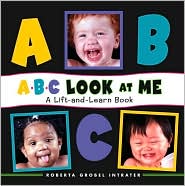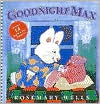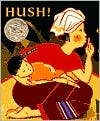Video clip of Empower Aside connecting print awareness and writing
Click here
Saroj Ghoting, Early Childhood Literacy Consultant
Your Custom Text Here
Video clip of Empower Aside connecting print awareness and writing
Click here
Saroj Ghoting, Early Childhood Literacy Consultant
Video clip explanation and demonstration of ineffective and effective early literacy asides.
Click here
Saroj Ghoting, Early Childhood Literacy Consultant
Video clip demonstration of an example early literacy aside emphasizing vocabulary using the book Cars, Galore by Peter Stein.
Click here
Saroj Ghoting, Early Childhood Literacy Consultant
Video clip explaining why we use factual books in storytimes and demonstrating Empower Aside using the book Termites on a Stick by Michelle Coxon
.Click here
Saroj Ghoting, Early Childhood Literacy Consultant
Video clip demonstration of making a rhyme, Eensy Weensy Spider, interactive between adult and children.
Click here
Saroj Ghoting, Early Childhood Literacy Consultant
Video clip of demonstration of Empower Aside using a handout, encouraging narrative skills, using Three Little Pigs.
Click here
Saroj Ghoting, Early Childhood Literacy Consultant
Video clip on planning the three early literacy asides in your early literacy enhanced storytime: explain aside, example aside, empower aside. Uses the book Farm Animals by Simms Taback as the example.
Click here
Saroj Ghoting, Early Childhood Literacy Consultant
Introduction to flannel board: Let's see what happens when you fill the tub with water. What might we see in the bathtub? Each line starts with "Fill the tub with water, what do you see?" Let's say that together. . . . Good!
Fill the tub with water, what do you see? I see bubbles floating in the bathtub sea. Fill the tub with water, what do you see? I see a washcloth floating in the bathtub sea. Fill the tub with water, what do you see? I see a cake of soap floating in the bathtub sea. Fill the tub with water, what do you see? I see a shampoo bottle floating in the bathtub sea. Fill the tub with water, what do you see? I see a little boat floating in the bathtub sea. Fill the tub with water, what do you see? I see a pouring cup floating in the bathtub sea. Fill the tub with water, what do you see? I see a toy shark floating in the bathtub sea. Fill the tub with water, what do you see? I see some swim goggles floating in the bathtub sea. Fill the tub with water, what do you see? I see a watering can floating in the bathtub sea. Fill the tub with water, what do you see? I see a rubber ducky floating in the bathtub sea. Fill the tub with water, what do you see? I see a nice clean baby splashing in the bathtub sea.
Early Literacy Aside--Empower: Even when you are giving your children a bath, naming the objects, describing them, talking about floating and sinking, heavy and light, as they play with toys in the bath; these are good ways to expand their knowledge and vocabulary which will later help them understand what they read.
by Amy Alapati and Virginia Krute, Montgomery County (MD) Public Library Flannel board pattern: filltubwaterFB

Preparation: Use the attached pattern to cut out large flannel board pieces. You can make the pictures smaller to cut out pieces that you will hand out to the storytime participants. Activity: We have just read the book Freight Train by Donald Crews. Now let's play a matching game on the flannel board. Here is the whole train. [Put up the cars of the train and name them. Describe their color, shape, etc. Pass out one car to each of the storytime participants. Remove your whole train. Put up one car and describe it.] I have put up the cattle car. It is green and looks like a rectangle. It has two lines in the middle that cross each other. They look like an X. Several of you have a green cattle car. If you do, come up and make your match on the flannel board. Good job! [Continue with other cars.]
Early Literacy Aside--Example: When we play matching games with children, we help them notice characteristics of objects, what is similar and different. This type of thinking will later help them notice differences and similarities in letters as they learn to identify letters and learn to read.
Flannel board pattern: freighttrainFB
small cars can be used for individual handout
Early Literacy Aside--Empower: Today we talked about farm animals and sang Old Macdonald. Here is an activity sheet for you and your child to draw farm animals and talk about the sounds they make, which is a first stem to helping your children hear the smaller sounds in words. Don't worry if you can't figure out which animal your child has drawn. Your child will tell you what it is. Enjoy!
Early Literacy Aside--Empower: We can help children learn new words as we play with them. In today's storytime we read We're Going on a Bear Hunt which had directional words. Here is a game you can play. Show your child an item (a shoe perhaps) and hide it in a room with a little of it showing. Give your child hints about where to find it using position words like right, left, above, below, and so on. You can also give clues like, "You're getting warmer or colder" as they get closer or farther away. Here is a handout with the game and some activities to support pre-reading skills.
You can use the figures on the handout as a pattern to make a flannel board. Then use the flannel board as another way to share the rhyme and to play a game.
Introduction: Let's say the rhyme Hickory Dickory Dock Hickory dickory dock The mouse ran up the clock The clock struck one, the mouse ran down. Hickory dickory dock. Repeat using struck two . . . the mouse said "Boo." struck three . . . the mouse said "Whee." struck four . . . the mouse said "No more!" Great! Now let's play a little game on the flannel board. I am going to put the mouse somewhere near the clock and you see if you can tell me where. [Put the mouse on top of the clock.] Where is the mouse? Right! On top of the clock. Repeat with behind, underneath, below, beside or next to, etc.
Early Literacy Aside--Example: When we use words that describe position, you are helping your children understand what the words mean. This will later help them understand what they read. Early Literacy Aside--Empower: Adults, I have a handout here with illustrations for Hickory Dickory Dock. In addition to saying the rhyme together with your children, you can cut out the figures and put the figures in different positions to help your children learn new words and build their vocabulary. Enjoy!
Nursery Rhyme: Jack and Jill
Jack and Jill went up the hill
To fetch a pail of water
Jack fell down
And broke his crown
And Jill came tumbling after.
Preparation: Have the words to the rhyme up on a chart. Have the group say, not sing, the words. Then have the group sing the rhyme. Ask the adults what differences they noticed when singing it vs. saying it.
Early Literacy Aside--Example: Singing slows down language so that children can hear the smaller sounds in words. This helps children later to sound out the words when they learn to read.
Early Literacy Aside--Example: Helping children hear the beginning sounds of words is one way to develop their phonological awareness--their ability to hear the smaller sounds in words. This will later help them sound out words when they learn to read. You can put new words to the tune of the song Old Macdonald. I'll say two words and you see if you can hear the beginning sound which is the same for both words. SSSSSad and SSSSSSilly. What's the sound that is the same for both words? Right! /s/ Now we'll sing a song about it. Let's try it. To the tune of Old Macdonald Had a Farm What’s the sound that these words share? Listen to these words: Sad and silly are these words Tell me what you heard. With a /s/, /s/, here and a /s/, /s/ there Here a /s/, there a /s/, everywhere a /s/, /s/ /S/ is the sound that these words share. We can hear the sound!
Try other words and sounds. It is easier for the children to join in with the sounds if you talk about the words before singing the song.
Song for Explain Early Literacy Aside:To the tune of Pop Goes the Weasel
Our early literacy skill today
is letter knowledge [fill in the name of the skill].
Getting to know lots of shapes [Substitute aspect of skill being highlighted]
will HELP children read.
Add information related to skill: Researchers have found that children recognize letters according to their shapes. Talking with young children about shapes is one way to support emerging literacy skills.
Some examples for other skills, to fill in:
Skill=vocabulary: Explaining unfamiliar words . . .
Information on skill: Researchers have found that children who have larger vocabularies, who know more words, can more easily recognize words they sound out and can also more easily understand what they read when whey learn to read.
Skill=print motivation . . . Having fun while sharing books
Information on skill: Researchers have found that children who have enjoyable interactions around books and reading are more likely to stick with learning to read even when it is difficult.
Skill=phonological awareness . . . Clapping out the parts of words . . . OR Having fun with rhyming words . . .
Information on skill: Helping children hear the smaller sounds in words will help them later to sound out words when they begin to read.
Skill=print awareness . . . Pointing to signs all around . . . OR Pointing to words in a book Information on skill: Understanding that the written word stands for the words helps children understand how reading works.
Skill=background knowledge . . . Reading information books . . . OR Telling your children what you know . . .
Information on skill: Children are naturally curious. By adding to the information they know on topics that interest them, they will later be able to better understand what they read. Skill=background knowledge . . . Having children retell stories . . .
Information on skill: When children retell stories they learn how stories work, that the have a beginning, a middle, and an end. This will help them later when they have to write stories in school.
Choose only one skill to highlight (to say the aside).
Videoclip of making Hickory Dickory Dock more interactive between adults and children.In order to keep adults as well as children involved in storytime, it is good to have some storytime items interactive between the adults and the children. This encourages language interactions between them. We can encourage them to continue this kind of interaction even after storytime is over.
To view a videoclip of using a host puppet to convey early literacy information in the Explain Aside during storytime, click here.

Early Literacy Aside: Explain Aside: Noticing that the same letter can look different, like upper and lower case, is a beginning step for letter knowledge, one of the early literacy skills that children need to be able to learn to read.
Early Literacy Aside--Example Aside: One way we can help children learn what the letters look like and the letter names is by sharing alphabet books. When sharing alphabet books with children, we tend to focus more on the print than with any other type of book. Let’s share an alphabet book together.
Share the book ABC Look at Me by Roberta Intrater. Did you notice that when I read the book, I pointed to the letter? As we read alphabet books, we tend to point out the letter on the page as we say its name. This does not come so naturally while reading other kinds of books. As you talk about the letter you can point out that the same letter can look different. For example, here’s the letter R. It can look like R or r.
Empower Aside: When you read alphabet books, don’t worry if your child does not recognize the letters and the different ways they look. You are just introducing the idea that the same letter can look different. Alphabet books do not need to be read from A to Z. You can give the book to your child and let them choose a page that looks interesting. Then talk about the picture and the letter. As your child grows, keep pointing out and talking about letters. Let your child see your interest in them and they will follow your lead in learning them.

Introduction: Let's look at the cover of this book Goodnight Max by Rosemary Wells. What shapes do you see? Yes, the blanket has colored squares, the moon is a crescent shape; Max's nose looks like a triangle.
Read the book.
Early Literacy Aside--Example Aside: You don't need a book about shapes to talk about shapes. Talking about shapes with your child as we did at the beginning of this book, is the beginning of being able to recognize letters. Children begin to recognize letters by their shapes.

Early Literacy Aside--Explain: Today our early literacy tip is on hearing the smaller sounds in words. This pre-reading skill will help children later sound out words when they learn to read. [The skill is called phonological awareness.] I'll be pointing out some activities you can do to support this skill as you read with your children.
Introduction:Hush: A Thai Lullaby by Mingfong Ho is our next book. It is about a mother in Thailand singing a lullaby to her baby.
Early Literacy Aside--Example: This book has both animal sounds and rhyming words. Both of these activities, hearing and saying animal sounds and hearing and saying rhyming sounds and words support one of the early literacy skills, phonological awareness.
Read the book. Have participants join in with saying the sounds of the animals. After you read the book, come back to a page and talk about two words that rhyme. Have the children think of other words that rhyme--remember they can be nonsense words.
Early Literacy Aside--Empower: Today I pointed out some activities around the early literacy skill phonological awareness: hearing different sounds such as animal sounds, as we just did and having children make those sounds. For older children, we want them to be able to hear the smaller sounds in words, the syllables, to be able to hear and make the beginning sound in a word, to be able to hear and make rhyming words, and to play with these sounds. Researchers know these are important skills for later when your child tries to sound out words. Children develop at different stages and some things will be harder for some and easier for others. It is easier to recognize a rhyme than to make a rhyme, so if your child cannot rhyme a word, say two words and ask if they rhyme. By doing these activities, you will be helping your child enter school ready to learn to read.